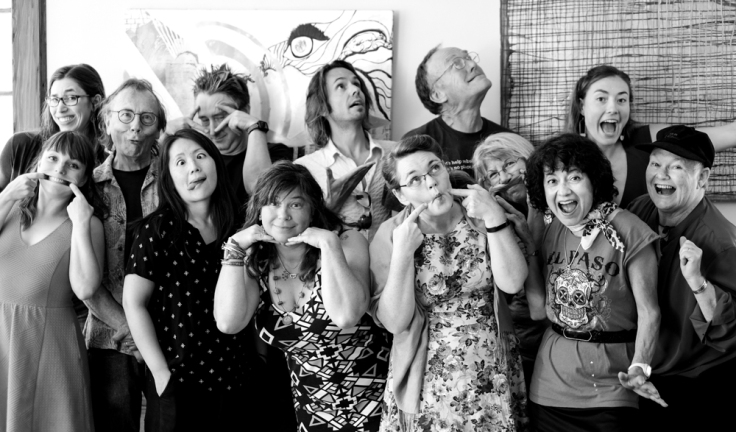
In thinking about Genesis, I am wholly influenced by Professor Jenny Braman and the work I did in her advanced drawing class at Berkeley City College.
Professor Braman championed her students to look deeply into the what, where and why of artistic work. She introduced me to a book by Anne West – a professor who teaches at the Maine College of Art – the book is titled, MAPPING The Intelligence of Artistic Work: An Explorative Guide to Making, Thinking and Writing.

West’s book is, in a large sense, about creating personal maps and matrices through writing prompts to explore the possibilities and resonances of our work.
It is intended to delve deeper into the process of the why, and the how, and on what we focus on. The book is divided into 4 parts:

Anne West Writes:
We plough the soil of our inspiration. The field we furrow is what I call the vision matrix. By writing freely, by instigating movement in our thinking, each unfolding effort adds something to the process of understanding. And as we do, we create concentric ripples across the surface of our awareness. This activity sets in motion dynamic connections in the mind.
West’s work is important to me because I am particularly inquisitive about the where, why and when.
I am interested in the birth or genesis of artistic manifestation. Knowing more about the inspiration itself may be a crystalline inspiration toward creating, after stumbling around for hours.
Admittedly, sometimes I create something seemingly out of the ether, and feel as if the muse took hold of me and she will never let go.
The unknown is so welcome (and an essential part of the art process), but I also would like to know what particular sunlit grove, which stretch of beach, helped bring the unknown into being.
How did I get to the source of the spring? Where was I when the spark struck and what did I do to sustain it?
What intrinsic or literal music was I listening to?
How did I pace myself?
What time of day did it occur and what are the primary patterns of the threads?
What part of that extended afternoon with a dear friend helped inspire me, even if indirectly, to finally sit down and be brave enough to do the work?
So in terms of Genesis, we should keep in mind all the artistic conditions that are truly fecund.
In the spirit of Anne West’s book, X marks the spot! That’s where the petals open to the primary source and bloom into your creation!
Take note of all those things that triggered your inspirations and, perhaps, how those have changed over time?
Where are you when you create and what time is it? Is it a not so unplanned type of serendipity, fused with intention?
What other variables make it possible? When you actually sit down and think about it, there will be so many more than you initially realize!
But only you can read your chart. That’s where the treasure is.

This is not say that we cannot just bloom where we are planted, and get the work done! Yes, we can! By all means.
But since we are limited in time, and despite our best efforts, we do lose our way. It’s good to have strategies, a many creased personal map to readily chart, invoke, curate and cultivate our best work.
MAPPING The Intelligence of Artistic Work: An Explorative Guide to Making, Thinking and Writing was published in 2011. Used copies can be found online starting at $300 dollars. I was able to get my local library to borrow it through the Illiad library sharing program. If you do go that route, make sure the copy you borrow is not restricted to in-library use only, because it is already considered a rare book. (That happened to me). I sincerely hope West gets a second printing run someday. I will buy many copies and give them to all my artist friends.
For more insight about Anne West’s work, check out annewest.net
Tao Graham, March 2017

March 22, 2017 at 12:37 pm
Thank you, very much. Very interesting post, Tao. I am starting right now to map my inspirations. Muse, music, time of day.
LikeLike
March 27, 2017 at 1:03 pm
Whoa – what an interesting process. So reflective and metacognitive. As an avid journaler, this sounds right up my alley.
LikeLike